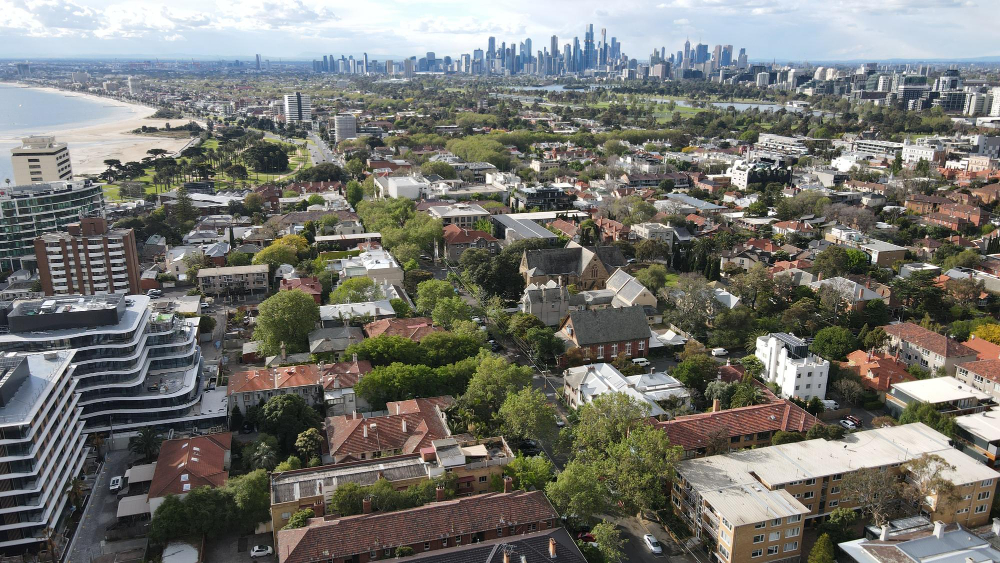Every investor dreams of finding that one suburb where property values soar and equity builds fast. It’s a natural goal; growth means progress. But what most buyers overlook isn’t the suburbs that crash, it’s the ones that simply underperform.
That’s where opportunity cost becomes the real threat. You might think you’ve made a smart move if your property rises by 20% over a few years. But what if another suburb just a few postcodes away grows by 80% in the same time? You didn’t lose money, but you lost momentum. And in property, time compounds just like interest.
Across Australia, thousands of new homes are being approved and built in areas once seen as “the next hotspot.” The problem? Supply is the silent killer of capital gains. When new housing floods the market faster than demand can absorb it, prices stall. What looks like an affordable entry point today can become years of missed growth tomorrow.
At AbodeFinder, we help buyers see beyond glossy marketing and hype. Using real data, not sales talk, we pinpoint suburbs where demand is rising, supply is constrained, and growth has real depth. Our goal is simple: help you buy smarter, not just sooner.
Because in property, the difference between a good investment and a great one isn’t luck, it’s insight.
The Supply Trap - Why New Developments Don’t Always Mean Growth
When Builders Boom, Prices Stall
Every property boom starts with a promise: more homes, more choice, more opportunity. But when construction surges too far ahead of population growth, that promise quietly breaks.
Property prices move on a simple rule: when supply rises faster than demand, growth slows down. It’s not emotion or opinion; it’s economics. As I said before, “Supply is the enemy of growth.”
Across Australia, state and local governments are fast-tracking major rezoning plans to tackle the housing shortage. On paper, that sounds positive: more homes for buyers and renters. But for investors chasing capital growth, it creates a new problem: oversupply.
When thousands of new homes hit the market at once, there’s suddenly too much choice. Sellers lose pricing power, buyers gain patience, and values flatten. Even in high-demand areas like Perth’s north or Adelaide’s fringe, future housing pipelines in the tens of thousands can quietly cap price growth for years.
The smart investor’s job is to read these signs before they appear in headlines. Growth doesn’t disappear overnight; it just gets absorbed by new supply long before the average buyer notices.
Opportunity Cost - The Real Risk Investors Ignore
Many investors settle for “good enough.” A 20–30% gain feels safe, especially when headlines celebrate it. But what they miss is the opportunity cost, the silent drag on their future wealth.
In undersupplied suburbs with real scarcity, that same timeframe might deliver 100–150% capital growth. The numbers tell the story: same budget, different outcome. The difference isn’t luck, it’s choosing where your capital works hardest.
As I said before, Concentrate Your Forces warns against scattering your energy. The same applies to property. You don’t build wealth by owning “a bit of everything.” You build it by focusing on quality locations where demand consistently outpaces supply.
In property investing, the game isn’t about owning the most homes; it’s about owning the right ones.
That’s what we teach at AbodeFinder: how to focus your investment power where scarcity drives leverage, and where every dollar of equity compounds faster. Because in real estate, precision beats volume every single time.
State-by-State Breakdown - The Areas to Think Twice About
Australia’s property market isn’t one single story; it’s a collection of micro-markets, each shaped by local policy, planning approvals, and supply pressure. Below are key areas across the states where oversupply could quietly eat away at long-term gains.
These aren’t “bad” suburbs. Many are performing well right now. The risk lies in what comes next when new developments start flooding the market and competition drives prices sideways.
South Australia - Roseworthy, Two Wells & Victor Harbour
South Australia is expanding fast, with 61,000 new homes planned across Roseworthy, Two Wells, Murray Bridge, Victor Harbour, and Goolwa. While short-term demand is healthy, the sheer volume of supply could cause long-term headaches for investors.
These are family-friendly areas with good rental interest today, but once new estates roll out, buyers will have endless options. That means more competition and slower price growth. Smart investors are already shifting focus toward tighter, infill areas closer to Adelaide’s established employment hubs, where new land is limited and demand stays strong.
Western Australia - Wanneroo to Banksia Grove Corridor
Perth’s northern corridor has seen huge wins for early entrants. Many investors doubled their property values during the recent boom. But as mass rezoning unlocks more than 50,000 new dwellings, the story is changing.
Wanneroo, Banksia Grove, Jandabup, and nearby suburbs are all releasing large tracts of former farmland for new estates. While Perth overall remains one of Australia’s strongest markets, this pocket faces heavy future supply.
Right now, savvy investors are taking profits, not positions. If you’re considering this area, check future development maps before committing. Long-term growth depends on scarcity, and this corridor may lose its edge.
New South Wales - Burwood North & Broadmeadow (Newcastle)
Sydney and Newcastle are magnets for development, and local councils are responding with high-density rezoning.
In Burwood North and parts of Strathfield, thousands of new apartment approvals will reshape the skyline. The same applies to Broadmeadow in Newcastle, where up to 20,000 new homes are projected through zoning changes.
For detached homes on generous blocks, there’s potential upside if developers come knocking. But for apartments, the flood of new units means heavy competition, flat rental returns, and limited capital growth.
If you’re chasing long-term value in NSW, focus on low-supply suburbs with established schools, transport, and limited new land releases. That’s where scarcity works in your favour.
Victoria - Beveridge & Wallen
North of Melbourne, glossy ads promise brand-new homes in Beveridge and Wallan. These house-and-land packages often lure first-time buyers with big marketing and small fine print.
Behind the brochures are risks: construction delays, poor build quality, and oversupply. The Victorian government plans around 15,000 new homes in Beveridge alone, meaning years of heavy competition for resale.
Growth isn’t driven by how new a property looks; it’s driven by demand exceeding supply. In these northern estates, supply is endless. For investors, that translates to slow equity growth and minimal pricing power.
Queensland - Redland City Region
Queensland continues to attract interstate buyers, and demand across Brisbane remains high. But in Redland City, which includes Alexandra Hills, Capalaba, Mount Cotton, and Victoria Point, there’s an 8,000-home pipeline already approved.
That’s a moderate level of supply compared to southern states, but if demand cools or interest rates tick higher, these suburbs could experience price stagnation.
For investors, this doesn’t mean “avoid completely”, it means be selective. Look for pockets near employment centres or limited land releases where growth can still outperform.
At AbodeFinder, we track these shifts in real-time rezoning maps, building approvals, migration patterns, and on-the-ground data that most buyers never see.
Before you commit to your next purchase, make sure you’re buying in an area where demand beats supply, not the other way around.
Don’t Just Buy Property, Buy Strategy
Buying in the wrong area won’t always wipe you out, but it will slow you down. That’s the real cost. Capital stuck in oversupplied suburbs drifts while better streets, tighter pockets, and scarce markets compound ahead. Wealth in Australian property isn’t luck. It’s precision — choosing suburbs where supply is constrained, demand is real, and growth stacks up over time. The smartest investors look where others overlook, and they let data lead the way.
If you want consistent capital growth, treat each purchase like a strategy, not a souvenir. Read the signals, respect supply pipelines, and buy where your equity can work harder.
Ready to invest like a strategist, not a speculator?
Before you buy your next property, get a free suburb analysis with AbodeFinder.
Discover which areas are likely to grow and which could quietly underperform in the Australian property market.












